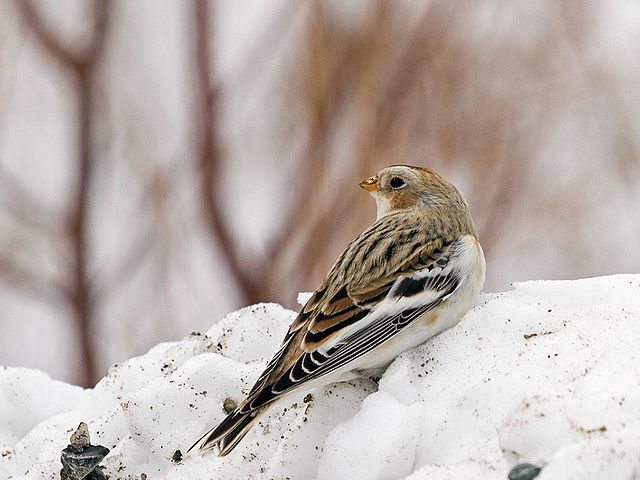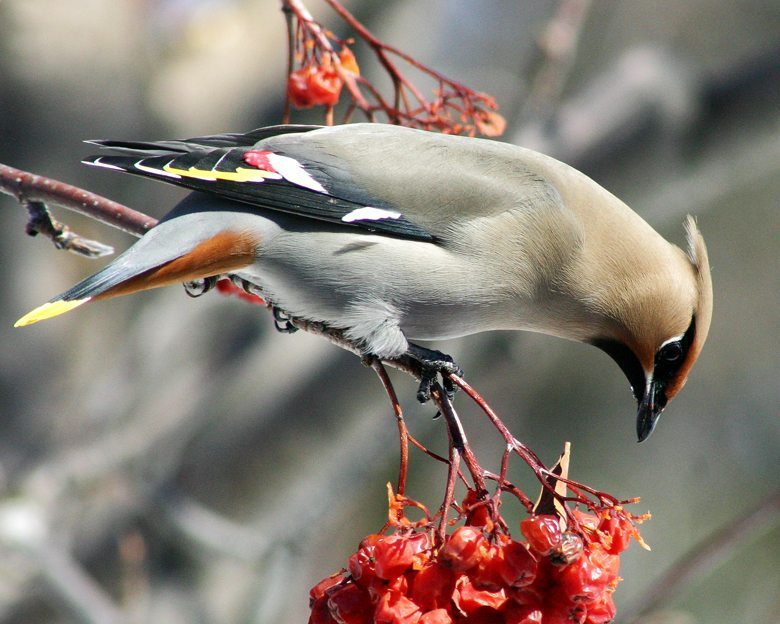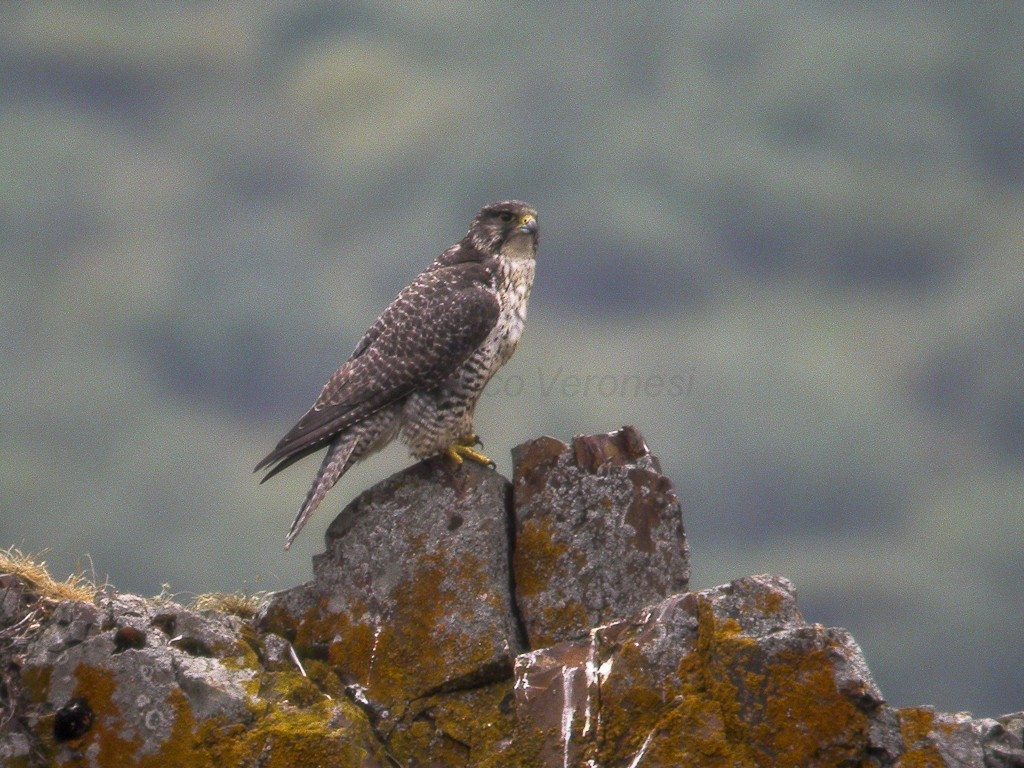Lani’s Big Year: Success in the Deep Freeze
Note: This is the tenth in a series of occasional blog posts by GGBA member George Peyton about his other half Lani Rumbaoa’s effort to see over 600 bird species in the Lower 48 states in 2015.
By George Peyton
Some of our friends thought we were a bit crazy to fly to Duluth, Minnesota — one of the coldest, snowiest parts of the United States — right after Christmas. However, it turned out to be a big success, allowing Lani to finish her Big Year of Birding with a total of 641 bird species seen during 2015 in the Lower 48 States, more than many birders have seen in their entire lifetimes.
We left home for San Francisco International Airport at 5 a.m. on December 26, our Christmas dinner barely digested, for our early morning flight to Duluth, and when we arrived late afternoon, it had been snowing all day, about 10 inches on the ground.
The next morning we met our excellent birding guide, Kim Risen, at 6 a.m. and headed out driving through the snow to the famous Sax-Zim Bog area to start our birding for the the day around dawn. At our first stop Kim checked the outside temperature – two degrees above zero. We were pleased that Kim had just put new snow tires on his SUV the previous day.

Due to the snow and the subfreezing temperatures, we did much of our birding from inside of Kim’s SUV. The first good sighting was a Great Gray Owl in the early morning light – not new for Lani, since she had seen one at the same general location in June, but still impressive.
Kim had our list of Target Birds that would be new for Lani’s Big Year List. The first addition was Hoary Redpoll, found in a flock of Common Redpolls, instantly recognizable as a plump puffball, much lighter-plumaged than its companions.

That day Kim located three more new bird species for Lani’s Big Year List — Pine Grosbeak, Northern Shrike, and Snow Bunting. The new snowstorm had covered up most of the normal grassy feeding areas for Snow Bunting, but after substantial searching Kim located a flock of fourteen feeding right on the edge of the road. Every time that we approached too close, the bunting flock would fly away for a little over a minute but then return to the same spot, so we had great views. Finding four new species in one day after Lani already had reached 635 on her Big Year List was very impressive.

The following day we met Kim again at 6 a.m. and headed out into the dark, cold, and snow for a long drive northeast from Duluth along the Lake Superior shore and then inland through a beautiful snow-covered landscape to the North Woods near the Boundary Waters Wilderness.
Our first target species was Spruce Grouse, which we had searched for in vain in May and June in Maine and Minnesota. These are birds of the boreal forest, and during the winter they sometimes come out to the roadside to eat the sand and grit spread by road crews on the snowy roads. But after well over two hours of searching the most likely areas without any luck, we then focused on finding another target species.
We headed to the small town of Ely and started driving one street after another searching for trees with berries or fruit still on them. Suddenly, Lani called out that she had spotted Bohemian Waxwings. It was really cold outside, so I added a hat with earflaps and a woolen scarf to my many other layers (including two pairs of long underwear), but even then my cheeks and nose were freezing.
Soon we forgot about the cold because the Bohemian Waxwings — plump with Buddha bellies like me — were very tame, allowing us to come quite close. Kim estimated that there were 55 birds feeding on fruit in three or four trees.

This was a high point in our last two long days of birding in the frigid Minnesota landscape, since we spent hours and hours looking without luck for three special birds — Hawk Owl, Spruce Grouse, and White-winged Crossbill. Kim Risen knew all of the likely places to see these species, but for some reason Hawk Owl was absent from northern Minnesota for the first time during winter in many years, while White-winged Crossbill was extremely scarce this year.
We searched for the crossbills one afternoon and again the next morning just after daylight in the small town of Cook, where they had been reported recently, but after hours of effort, we finally gave up. Actually, it was getting a bit frustrating.
Then as we were getting close to the end of daylight on our last day of birding, Kim drove us across the bridge from Duluth to Superior, Wisconsin, and then down into the somewhat run-down Port District. We pulled up near a a large warehouse building right by the water. Kim jumped out of the SUV, grabbed his scope, sighted it on a tower at one end of the warehouse, and called out: “It’s here! Come quickly.”
Lani ran to the scope, and there was the image of a gorgeous adult gray-phase Gyrfalcon, both a Life Bird and No. 641, the final species, for her Big Year List. What a total thrill! Gyrfalcon is an Arctic species with very few sightings each year in the lower 48 states, so we were extremely fortunate to see one.
No one else had previously reported any Gyrfalcon in the Duluth area this winter, but Kim on a hunch had decided to check the location it had been seen the previous winter — and his hunch paid off. This was a special bird for Lani, since she had missed seeing one in January in New Hampshire by just five minutes, and we never found that other bird, despite a long search.

Lani and I returned to SFO late on December 30. After over two hours of fighting traffic back to Berkeley, we collapsed at home, exhausted but very happy. The phrase “Home, Sweet Home” really had meaning after traveling outside of the Bay Area for almost six months of 2015.
There still was one more day left in 2015 to track down any possible species around the Greater Bay Area that Lani had not yet seen. But after checking Sialia and other rare bird reports, nothing new turned up, so Lani was able to celebrate New Year’s Eve with a feeling of “Mission Accomplished.”
Through hard work, perseverance, and dogged determination, Lani far surpassed her initial goal of seeing 600 bird species during 2015. In the process, she also became a really fine birder with an uncanny ability to spot difficult-to-see birds. We have been told that 641 species is one of the highest counts ever made in a Lower 48 States Big Year.
P.S. There will be one final posting on Lani’s Big Year in the coming weeks, with my observations on lessons from our Big Year experiences, as well as tips to others who may want to undertake a Big Year.
—————————————
George Peyton practiced law for 44 years, dividing his time between a private practice and work as Piedmont City Attorney. He has served on the boards of Golden Gate Bird Alliance, Point Blue (formerly PRBO), Audubon Canyon Ranch, and National Audubon. He played a leading role in National Audubon’s work to save Mono Lake. He has been an active birder for 66 years and seen about 6,500 bird species. Click here to read his previous posts on Lani’s Big Year.
